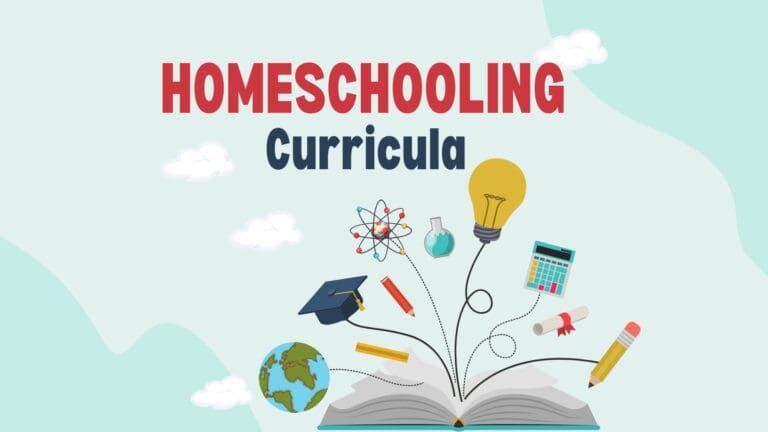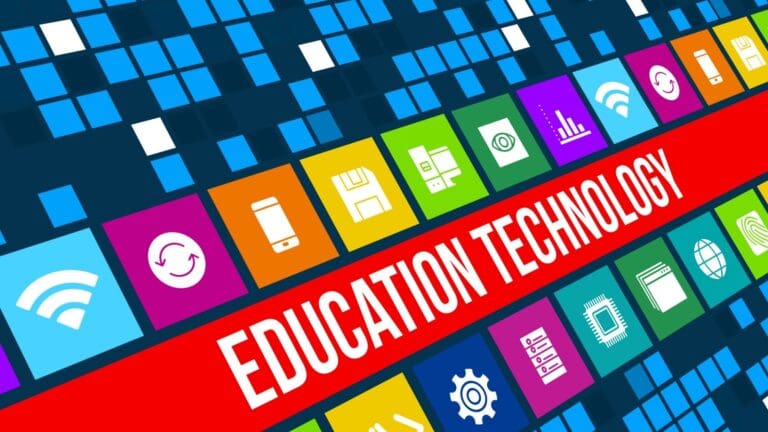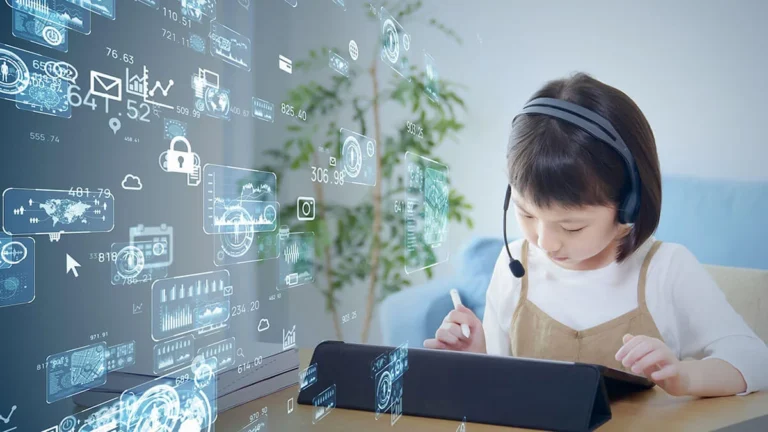Blended Learning: A Complete Guide For Modern Education
Blended learning, also known as technology-mediated instruction or web-enhanced instruction, is an educational approach that combines the best of both worlds: traditional face-to-face classroom methods and online learning. As a teacher or instructor, you have the opportunity to create an engaging and interactive learning environment by employing various digital tools and resources.
In a blended learning classroom, you can cater to the diverse needs of your students by offering them increased flexibility and personalization. By incorporating online elements, your students can access learning materials at their own pace, allowing them to reinforce their understanding of the subject matter no matter where they are located. At the same time, in-person classroom sessions provide valuable opportunities for collaboration, discussion, and teacher-guided instruction.
When implementing blended learning, it’s essential to find the right balance between online and traditional teaching methods and ensure that your content is accessible and engaging. By taking advantage of the variety of resources and educational technology available, you can create a truly student-centered learning experience that meets the needs of all learners in your classroom.
History
The concept of Blended Learning has been around for quite some time, but it has gained significant attention with the expansion of technology in the classroom. In the late 1990s and early 2000s, the first generation of web-based instruction emerged as computers became more accessible to the masses, and organizations saw the potential for combining traditional face-to-face learning with distributed learning environments (eLearning Industry) .
In the beginning, the lack of technological availability presented challenges in blending traditional learning methods with online components. But over time, the rapid development of digital tools and resources has made creating more personalized learning experiences increasingly possible.
As you explore the history of Blended Learning, you’ll find that it is not a new concept. What has changed is the way technology has been integrated with in-person classroom instruction, allowing educators to offer a more tailored and engaging learning experience.
The evolution of Blended Learning has been driven by the ongoing growth of digital tools and the increasing ubiquity of the internet, which together have reshaped the educational landscape. This has led to the current methods used in Blended Learning, which combine digital tools and face-to-face instruction to offer personalized experiences that adapt to each student’s needs.
Types of Blended Learning
When diving into blended learning, you’ll encounter various approaches that mix face-to-face and online learning experiences. Let’s take a closer look at synchronous and asynchronous blended learning types.
Synchronous Blended Learning
Synchronous blended learning involves real-time interactions between you and your peers or instructor, regardless of whether the session takes place in a physical classroom or online. In this model, you participate in activities like live lectures, group discussions, or webinars.
The benefits of synchronous blended learning include immediate feedback and the social aspect that comes from engaging with your peers. However, it might be challenging to coordinate schedules and accommodate different time zones for online sessions.
Asynchronous Blended Learning
Asynchronous blended learning revolves around individualized learning at your own pace. You’ll independently access learning materials, such as recorded lectures, slide presentations, and reading materials, and complete assignments without real-time interaction with your peers or instructor.
Some key advantages of asynchronous blended learning include the flexibility of working on your schedule and reviewing materials at your own pace. However, you may not receive immediate feedback, potentially affecting the learning experience.
Synchronous and asynchronous blended learning can offer valuable opportunities depending on your needs, preferences, and learning goals. Make sure to consider the pros and cons of each method when looking for the best educational experience tailored to your unique circumstances.

Benefits of Blended Learning
Flexibility
Blended learning offers you a significant advantage when it comes to flexibility in your learning environment. You can choose to participate in synchronous or asynchronous activities, depending on your schedule and preferences. This way, you can find the best balance between in-person and online learning experiences. With blended learning, you can set your own pace and adjust according to your learning style and needs.
Accessibility
Another benefit of blended learning is enhanced accessibility to educational resources. Online platforms provide you with access to a variety of materials, such as lecture notes, videos, and interactive applications, that can be accessed around the clock. This means you can revisit the content whenever needed and collaborate with classmates and instructors using online forums and chat features. Such resources allow you to customize your learning experience and engage with the materials in the manner that works best for you.
Efficiency
Blended learning can lead to improved efficiency in your education process. By incorporating technology within your learning experience, you can save time and effort that would have been spent on traditional methods. For example, online quizzes can provide instant feedback, helping you identify areas that require further attention. Moreover, research shows that students demonstrate increased interest and information retention when technology is integrated into their education.
In summary, blended learning offers flexibility, accessibility, and efficiency in your education. You can create a personalized and effective learning experience tailored to your unique needs by taking advantage of both online and in-person resources.
Blended Learning in Corporate Training
Blended learning has become increasingly popular in corporate training as it merges the advantages of synchronous and asynchronous techniques, offering an effective and engaging way to deliver knowledge and skills to your employees.
Utilizing live instructor-led sessions and self-paced online learning resources helps create a well-rounded training experience. As a result, blended learning can improve employee engagement and facilitate better knowledge retention. In fact, blended learning techniques accounted for 34.7% of training hours delivered in 2017, showing significant growth in recent years.
To maximize the effectiveness of your blended learning approach in corporate training, you should consider the following tips:
- Communicate the benefits: Explain to your employees how the blended learning program can improve their learning experience and ensure their active participation.
- Balance the mix of learning methods: Combine live, instructor-led sessions and self-paced online content to accommodate different learning styles and keep employees engaged.
- Offer diverse learning resources: Include various multimedia elements such as videos, interactive activities, and reading materials to cater to the preferences of a diverse audience.
By implementing a blended learning strategy in your corporate training, you can better accommodate different learning styles and preferences, leading to a more effective and engaging learning experience for your employees.
Challenges
Technology
One of the challenges you may face in blended learning is dealing with technology and accessibility issues. Blended learning relies on technology, and it’s crucial that both you and your students have the tools needed for it to work reliably. Ensuring that all students have access to appropriate devices, stable internet connections, and support for troubleshooting technical difficulties can be challenging, but it’s necessary for the success of a blended learning environment. Additionally, training staff and students on how to use the necessary tools and software can be time-consuming but essential for a smooth transition to this learning model.
Student Engagement
Another challenge in blended learning is maintaining student engagement. With the mix of online and in-person instruction, keeping students motivated and participating in their learning experience might become difficult. Encouraging interaction and communication among students can help overcome this hurdle. Providing a variety of learning materials and leveraging different technology tools, such as discussion boards or video chats, can also promote engagement and maintain interest in the course material.
Assessment
Assessing student performance in a blended learning environment is another potential challenge. Traditional assessment methods might not work as effectively for blended learning because students complete online and offline coursework and activities. Consequently, you need to develop new methods for assessing student learning and progress. Incorporating a variety of assessments, such as quizzes, projects, and participation, could help provide a more accurate reflection of student understanding and achievement. Additionally, using online assessment tools and analytics can offer insights into individual student performance and areas that may require additional support.
Blended Learning LMS
Blended learning combines the traditional instructor-led approach (either face-to-face or through video conferencing) with online learning. In this method, you can take advantage of a Learning Management System (LMS) to have full control over your training, making it more effective and engaging for learners.
An LMS can help streamline your blended learning strategy’s design, management, tracking, and assessment, ultimately improving the employee learning experience. For example, tools like electrical training ALLIANCE and ELB Learning provide LMS solutions specifically designed for blended learning.
When implementing blended learning with an LMS, consider the following aspects:
- Consistent Performance Tracking: Keep track of your learners’ progress during face-to-face sessions and online activities to ensure a seamless learning experience.
- Flexible Learning Paths: Customize your training according to your learners’ needs, providing personalized pathways that adapt to their skill levels.
- Collaboration Tools: Facilitate group activities and discussions through chat rooms, discussion boards, and document sharing to enhance real-world interactions.
- Resource Library: Have a well-stocked resource library that includes multimedia materials such as videos, documents, and quizzes, so your learners can access them whenever they need them.
Remember, the key to successful blended learning is a balanced approach that brings the best of both worlds – the flexibility and accessibility of online learning and the personal touch of face-to-face instruction. By leveraging the capabilities of an LMS, you can create a dynamic and effective blended learning experience for your learners.
Best Practices
When implementing blended learning in your educational courses, it’s crucial to follow some best practices to ensure its effectiveness and improve student learning outcomes. Here are a few guidelines to help you make the most of blended learning:
1. Focus on learning outcomes: Ensure your blended learning approach is designed to improve student learning outcomes. Choose modalities and methodologies that are most suitable for meeting the learning objectives of your course and not merely because they are trending.
2. Adopt a holistic approach: As mentioned by the eLearning Coach, designing blended instruction is different than designing a course that uses only one medium. Think holistically to ensure all components fit together effectively and complement each other to optimize student learning.
3. Personalize and offer flexibility: Blended learning allows tailored instruction to individual students while leveraging digital tools and face-to-face interaction. Allow your students the flexibility to learn at their own pace and through their preferred modalities.
4. Encourage student engagement: Foster an engaging learning environment by encouraging student interaction with their peers and instructors, as well as by promoting active participation in discussions, group activities, and other collaborative exercises.
5. Leverage technology effectively: Use technology to facilitate student communication, collaboration, and learning. This can include online discussion boards, video-conferencing tools, and educational apps that support the course objectives.
Remember, blended learning is a powerful approach that can greatly enhance educational experiences when implemented thoughtfully and strategically. By adhering to these best practices, you can optimize the impact of blended learning for your students and help them achieve their full potential.
Future Trends
In the rapidly evolving landscape of education, blended learning emerges as a trend that is gaining momentum. As you navigate the future of education, it’s essential to be well-informed about the trends and directions influencing blended learning.
One significant trend shaping blended learning is the increasing adoption of flexibility and ease of communication in educational environments. As an educator, leveraging digital tools and face-to-face instruction is crucial to cater to your student’s needs and enhance their overall learning experience.
Another noteworthy trend is the continued focus on incorporating various learning modalities within a single course or training program. This could include online modules, webinars, case studies, or group work projects. By exploring diverse learning modalities, you can create a more dynamic and engaging curriculum for your students.
As you design blended learning experiences, ensure to stay informed about developments in blended learning theories and frameworks. According to LinkedIn, future advancements in this area will likely serve as valuable guides for both research and practical application.
To stay relevant and effective, consider incorporating the best aspects of both physical and virtual classrooms into your teaching by following the blended learning trend. This approach can enable your learners to access the training and resources they need anytime, from anywhere, with an internet connection.
Ultimately, by staying abreast of these trends and adapting your teaching practices accordingly, you can deliver a more personalized, engaging, and effective learning experience for your students.







